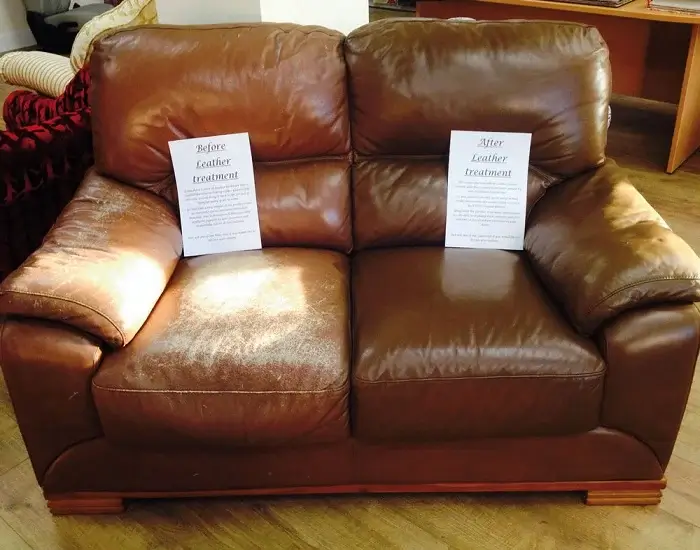
Introduction
Leather sofas are more than just pieces of furniture; they are timeless investments that add a touch of elegance and sophistication to any living space. However, as with all things, leather sofas can suffer from wear and tear over time. Scratches, discoloration, and loss of luster can all diminish the beauty of your cherished piece. But fear not! With the right knowledge and techniques, you can master the art of leather sofa restoration and bring back its luxurious finish. In this comprehensive guide, we’ll take you through the steps of cleaning, conditioning, and repairing leather upholstery to ensure your sofa looks as good as new.
Understanding Leather
Before diving into the restoration process, it’s crucial to understand the type of leather you’re working with. Leather comes in various grades and finishes, each requiring specific care methods. Aniline, semi-aniline, and pigmented leather are some common types, each with its own characteristics and susceptibility to damage. It’s essential to identify the type of leather your sofa is made of before proceeding, as using the wrong products can potentially cause more harm than good.
Cleaning the Leather
The first step in leather sofa restoration is thorough cleaning. Dust, dirt, and body oils can accumulate over time, dulling the leather’s natural shine. To start, gently vacuum the surface using a soft brush attachment to remove loose particles. Next, use a damp, soft cloth to wipe down the leather, paying extra attention to creases and seams where dirt tends to accumulate.
For deeper cleaning, consider using a leather-specific cleaner. Ensure that the cleaner is suitable for your type of leather and perform a patch test in an inconspicuous area before applying it to the entire sofa. Follow the manufacturer’s instructions, and always use a clean, damp cloth to wipe off excess cleaner after treatment. Avoid using excessive water or soaking the leather, as this can lead to irreversible damage.
Conditioning for Supple Softness
Leather, like your skin, needs moisturizing to stay supple and soft. Conditioning your leather sofa is a crucial step in the restoration process. Leather conditioning products contain oils that replenish lost moisture and restore the leather’s natural oils. These products also help prevent cracking and prolong the lifespan of your sofa.
Choose a high-quality leather conditioner that matches your leather type. Apply a small amount of the conditioner to a clean, soft cloth and test it on an inconspicuous area. If there are no adverse effects, gently massage the conditioner onto the entire surface of the sofa using circular motions. Focus on areas that are more prone to dryness, such as the arms and the backrest. Allow the conditioner to be absorbed for the recommended time, and then buff the leather with a clean, dry cloth to remove any excess.
Addressing Scratches and Scuffs
Over time, leather sofas may develop scratches, scuffs, or minor imperfections. While these marks add character to the leather, you might want to restore a more polished appearance. For light scratches, gently rubbing your fingers over the affected area may help to diminish their appearance.
For deeper scratches and scuffs, you can try using a leather repair kit. These kits typically include a filler compound that can be applied to the damaged area. Follow the kit’s instructions carefully, as the application process may vary. Once the filler is dry, gently sand the area using fine-grit sandpaper to blend it with the surrounding leather. Finish by applying a small amount of leather conditioner to restore the leather’s finish and texture.
Dealing with Discoloration
Discoloration can occur due to exposure to sunlight, improper cleaning, or the use of unsuitable cleaning products. To address minor discoloration, start by cleaning the leather thoroughly to remove any surface dirt or debris. If the discoloration persists, you might need to use a leather color restorer or leather dye that matches your sofa’s original shade. Test the product on an inconspicuous area first and follow the manufacturer’s instructions for application.
For more significant discoloration or fading, it’s advisable to seek professional help from a leather restoration specialist. They have the expertise and tools to restore the leather’s color and luster effectively.
Protecting Your Restored Leather Sofa
Once you’ve completed the restoration process, it’s important to take steps to protect your newly restored leather sofa. Place your sofa away from direct sunlight and heat sources, as these can cause the leather to fade and dry out. Use a leather protector or conditioner with UV protection to shield the leather from harmful rays.
Regular maintenance is key to preserving the restored appearance of your leather sofa. Gently dust the surface with a soft cloth and vacuum the creases periodically to prevent dirt buildup. Avoid using harsh chemicals or abrasive materials that can damage the leather.
Risala Furniture LLC 9 24 A street, Al Quoz 1 Dubai – United Arab Emirates
Abu Dhabi Island, Al Salam Street Behind Abu Dhabi Municipality And FAB Bank Heirs. Of Ibrahim G. Sultan Al Suwaidi Building ONLINE FURNITURE – Showroom no. S2 Abu Dhabi
© Copyright 2023 Sofa Repair Shop Dubai – All rights reserved
 Call Now Button
Call Now Button